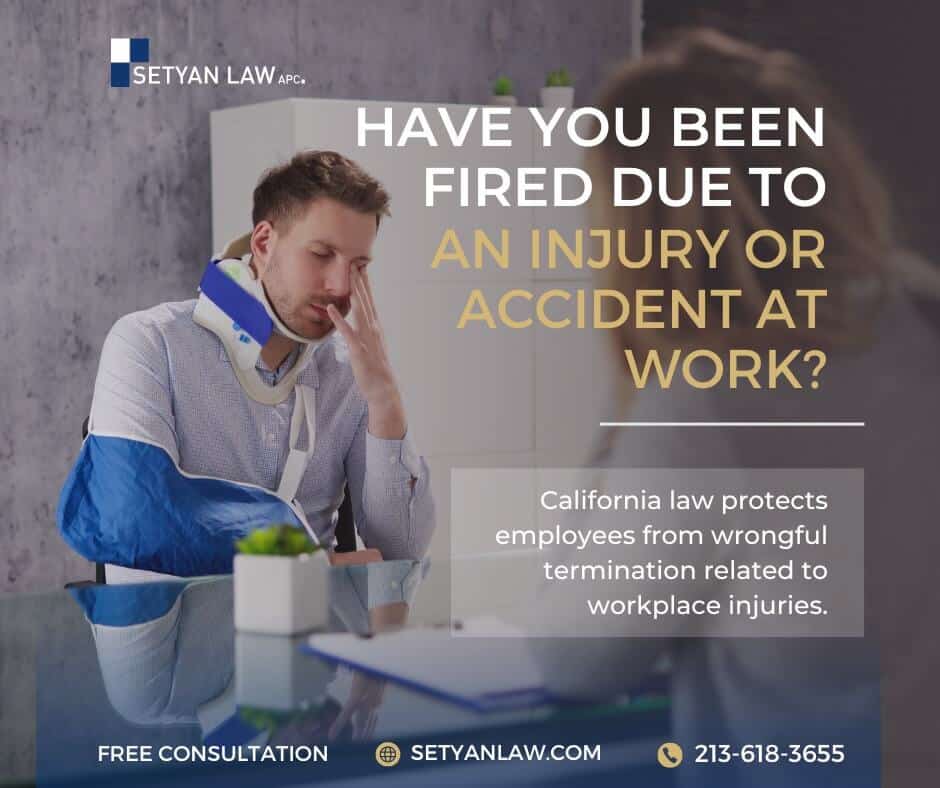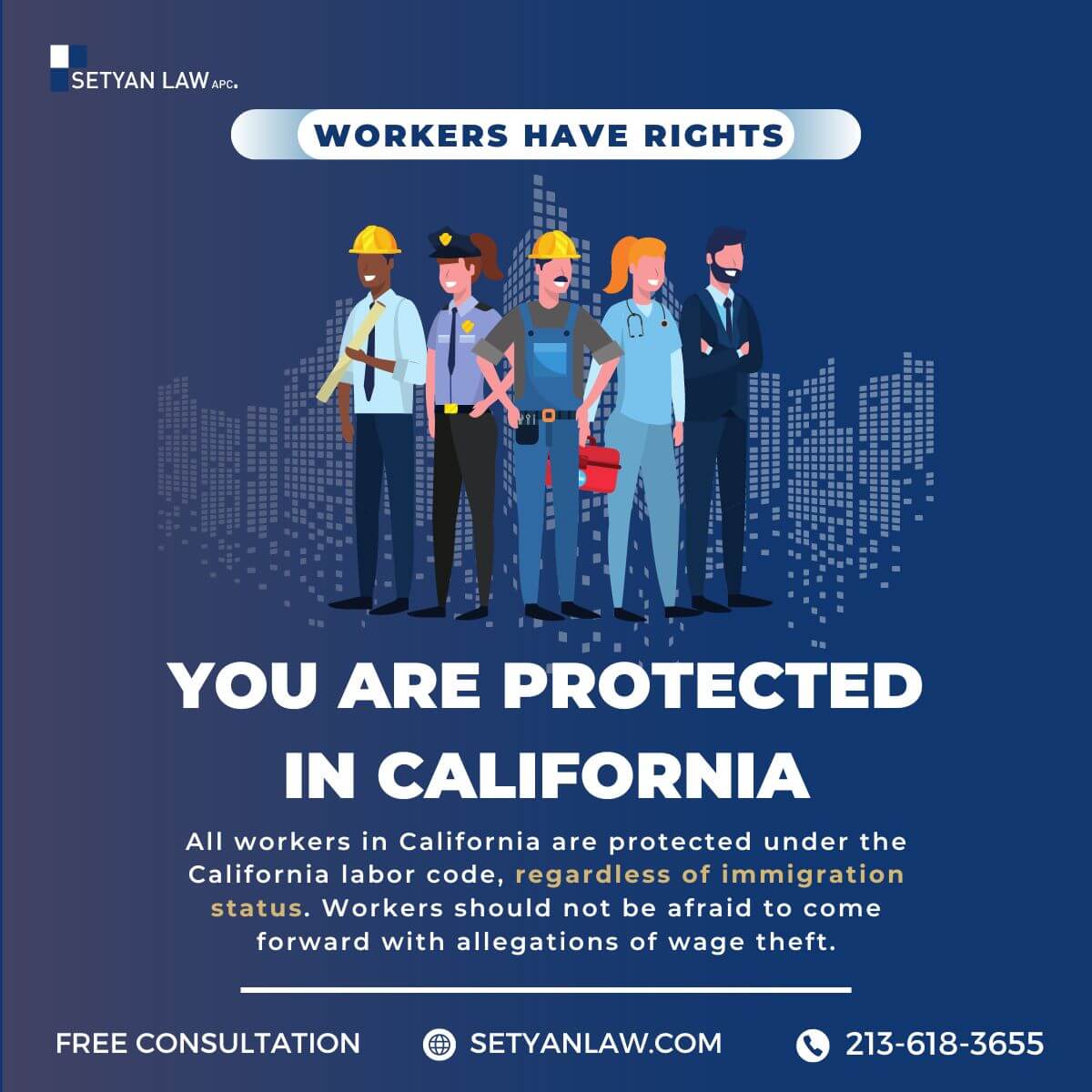Updated August 1, 2024
Have You Been Fired Due to an Injury at Work?
Workplace injuries can be a devastating experience, both physically and emotionally. The aftermath can be even more challenging when an employer decides to terminate an employee due to their injury. This raises a critical question: Can an employer legally fire someone for getting hurt on the job? The answer is complex, with a range of legal protections and exceptions that must be carefully navigated.
Understanding Workers’ Compensation
When an employee sustains an injury while performing their job duties, they are typically entitled to workers’ compensation benefits. These benefits are designed to cover medical expenses and a portion of lost wages during the recovery period. Importantly, workers’ compensation laws in many jurisdictions prohibit employers from retaliating against employees for filing a claim.
Reporting the Injury
The first crucial step is to promptly report the workplace injury to the employer. This documentation is essential for establishing the injury’s work-related nature and initiating the workers’ compensation process. Employees should be diligent in recording the details of the incident, including the date, time, and circumstances surrounding the injury.
Seeking Medical Treatment
Seeking prompt medical attention is also crucial. Employees should follow the employer’s protocols for seeking treatment, which may involve visiting a designated healthcare provider. Maintaining detailed records of all medical examinations, diagnoses, and treatments is vital for supporting the workers’ compensation claim.
Navigating the Claims Process
Once the injury has been reported and medical treatment has commenced, the employee can file a workers’ compensation claim. This process can be complex, and it is often advisable to consult with an experienced workers’ compensation attorney to ensure the claim is properly submitted and the employee’s rights are protected.
Employer Obligations and Protections
Employers have specific obligations when an employee sustains a workplace injury. They are generally required to provide workers’ compensation coverage and ensure a safe work environment. Terminating an employee solely due to a work-related injury or the filing of a workers’ compensation claim is often considered unlawful retaliation.
Accommodating Injured Employees
Employers are typically required to make reasonable accommodations for injured employees, such as modifying job duties or providing light-duty work, to facilitate their return to the workplace. Failure to do so may be grounds for a lawsuit.
Anti-Retaliation Laws
Many jurisdictions have enacted anti-retaliation laws that prohibit employers from taking adverse actions, such as termination, against employees who exercise their rights related to workplace injuries and workers’ compensation claims. Employees who believe they have been fired due to their injury may have grounds for legal action.
Wrongful Termination Claims
If an employee can demonstrate that their termination was directly linked to their workplace injury or workers’ compensation claim, they may have a valid wrongful termination claim. This can potentially result in additional compensation beyond what is available through the workers’ compensation system.
Navigating the Challenges
Navigating the legal landscape surrounding workplace injuries and termination can be complex and overwhelming. Employees who find themselves in this situation should take proactive steps to protect their rights and seek the appropriate support.
Documenting the Incident
Meticulous documentation is crucial. Employees should gather all relevant evidence, such as medical records, communication with the employer, and witness statements, to substantiate their case.
Consulting with an Attorney
Seeking the guidance of an experienced employment law or workers’ compensation attorney is highly recommended. These professionals can provide invaluable advice on navigating the legal process, understanding one’s rights, and pursuing the appropriate course of action.
Exploring Potential Remedies
Depending on the circumstances, employees who have been terminated due to a workplace injury may be entitled to various forms of relief, such as reinstatement, back pay, or additional compensation. An attorney can help evaluate the specific situation and identify the most suitable legal remedies.
Accommodations and Return to Work
When an employee is able to return to work following a workplace injury, the employer’s obligations and the employee’s rights continue to be an important consideration.
Transitioning Back to Work
Employers are often required to engage in an “interactive process” to determine appropriate accommodations that will enable the injured employee to perform their essential job functions. This may involve modifying the work environment, adjusting job duties, or providing assistive equipment.
Navigating Light-Duty Assignments
In some cases, employers may offer light-duty or modified work assignments to facilitate the employee’s gradual return to their regular duties. While employers have the right to assign work within the employee’s restrictions, they must ensure that the pay and conditions of the light-duty position are not unduly punitive or demeaning.
Addressing Employer Resistance
Employers may sometimes resist providing accommodations or may attempt to terminate the employment relationship, even when the employee is able to perform the essential functions of their job with reasonable accommodations. In such cases, the employee may have grounds to pursue legal action for disability discrimination or retaliation.
Termination During Workers’ Compensation
The prospect of being terminated while receiving workers’ compensation benefits is a legitimate concern for many injured employees. However, it is important to understand that the termination of employment does not automatically result in the cessation of workers’ compensation benefits.
Continued Benefit Eligibility
Even if an employee is terminated or laid off while receiving workers’ compensation benefits, they are still entitled to continue receiving those benefits as long as the injury is still the primary reason for their inability to work. The termination of employment does not negate the employee’s right to workers’ compensation.
Potential Challenges
That being said, employers may still attempt to use the termination as a pretext to deny or terminate workers’ compensation benefits. Employees should be vigilant and work closely with their workers’ compensation attorney to ensure their rights are protected and their benefits continue uninterrupted.
Seeking Unemployment Benefits
In some cases, an employee who is terminated while on workers’ compensation may also be eligible for unemployment benefits. However, the specific eligibility criteria can vary depending on the jurisdiction and the circumstances surrounding the termination.
Navigating the Unemployment Process
Employees who have been terminated while on workers’ compensation should consult with an employment law attorney to understand their rights and the appropriate steps to take in applying for unemployment benefits. The attorney can help navigate the process and ensure that the employee’s rights are protected.
Potential Limitations
It is important to note that the severity of the injury and the employee’s ability to perform any work may impact their eligibility for unemployment benefits. In cases where the employee is deemed unable to work due to the injury, they may be directed to pursue disability benefits rather than unemployment.
Workplace Injury Prevention
While the focus of this article has been on the legal protections and remedies available to employees who have been terminated due to a workplace injury, it is important to emphasize the importance of workplace safety and injury prevention.
Employer Responsibilities
Employers have a legal and moral obligation to maintain a safe work environment and implement effective safety protocols. Failure to do so can lead to preventable workplace injuries and, in some cases, legal liability.
Employee Engagement
Employees also play a crucial role in workplace safety. By actively participating in safety training, following safety protocols, and reporting any hazardous conditions or near-misses, employees can help create a safer work environment and reduce the risk of workplace injuries.
Continuous Improvement
Workplace safety should be an ongoing priority for both employers and employees. Regular safety audits, training updates, and open communication about safety concerns can help identify and address potential hazards before they result in injuries.
Conclusion
Workplace injuries can be a complex and emotionally challenging experience, made even more difficult when an employer responds by terminating the employee. However, it is crucial for injured workers to understand their rights and the legal protections available to them.
By reporting the injury promptly, seeking medical treatment, and navigating the workers’ compensation process with the assistance of an experienced attorney, employees can ensure that their rights are upheld and that they receive the compensation and support they are entitled to. Additionally, a proactive approach to workplace safety can help prevent such incidents from occurring in the first place.
Ultimately, the goal should be to create a work environment that prioritizes the well-being and safety of all employees, while also providing a clear and fair process for addressing workplace injuries and protecting the rights of those affected.
If you need a workplace rights lawyer, please call Setyan Law at (213)-618-3655. Free consultation.







